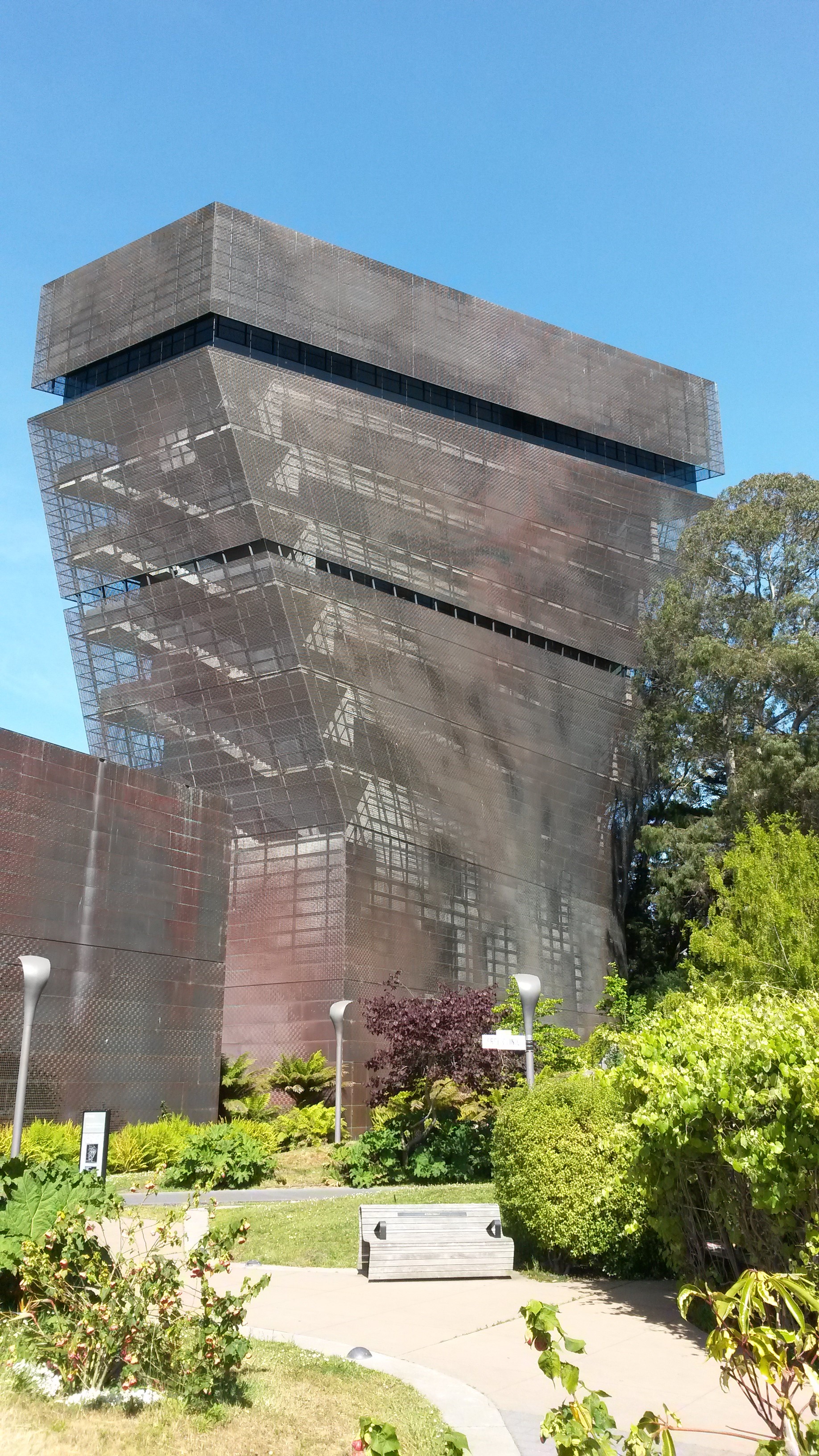
I had the opportunity on a recent trip to San Francisco, my first since 2005, to visit the new-to-me de Young Museum in Golden Gate Park, which opened shortly after my last visit. Interesting to see a relatively new work by the architects of Vancouver’s forthcoming (?) art gallery, particularly to see the way the spaces intersect in parts of the building that aren’t the tall white walls of the galleries themselves.
Friends who have seen it, or who saw these pictures, described it as “a battleship,” “menacing,” and “very male.” Its surface is largely punched-metal sheeting over a steel frame, including the cladding on the administrative tower, with a concrete inner structure.
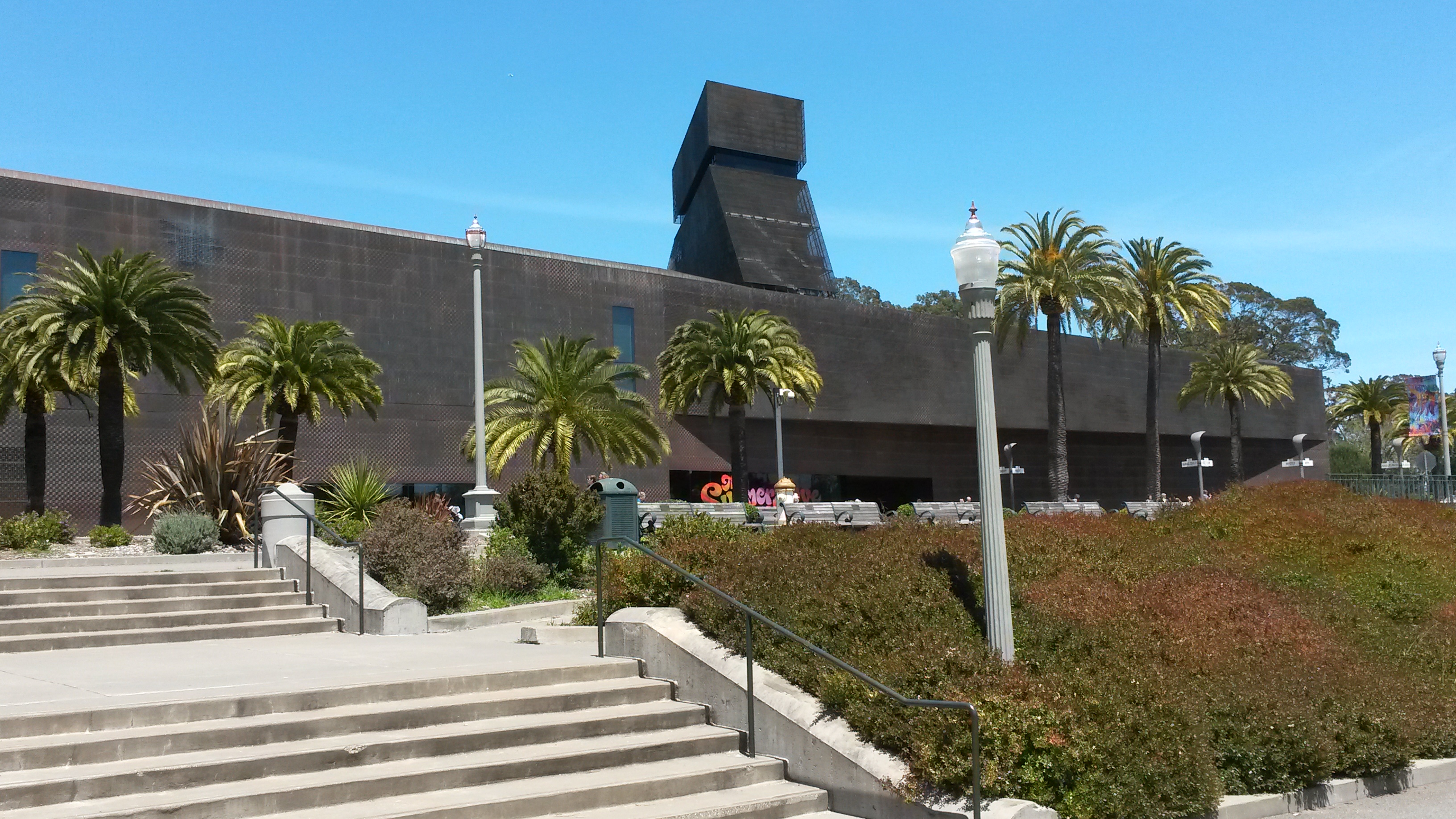
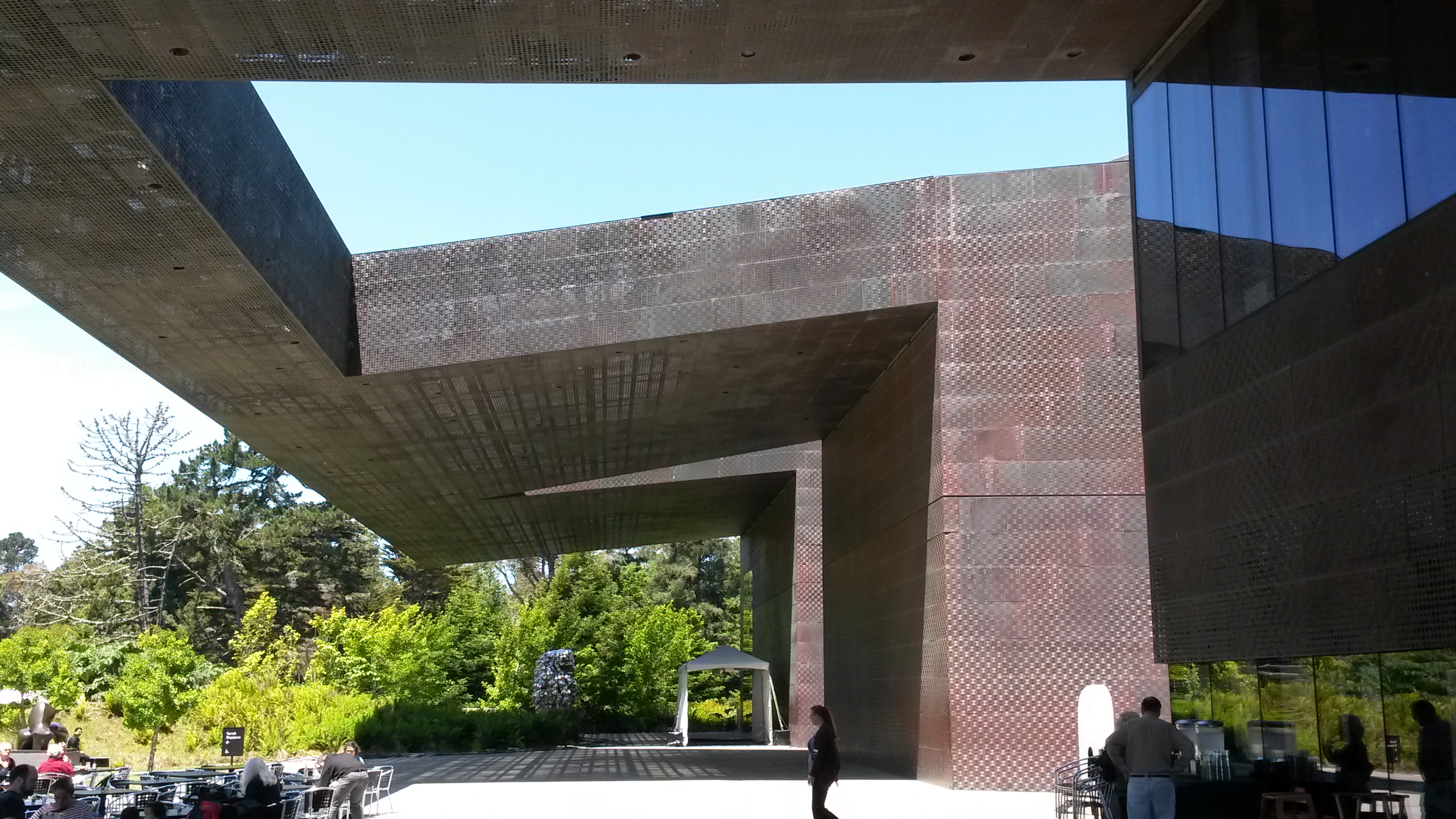
There were some interesting plazas and indented courtyards that let a little of the park’s green curves into the museum’s space.
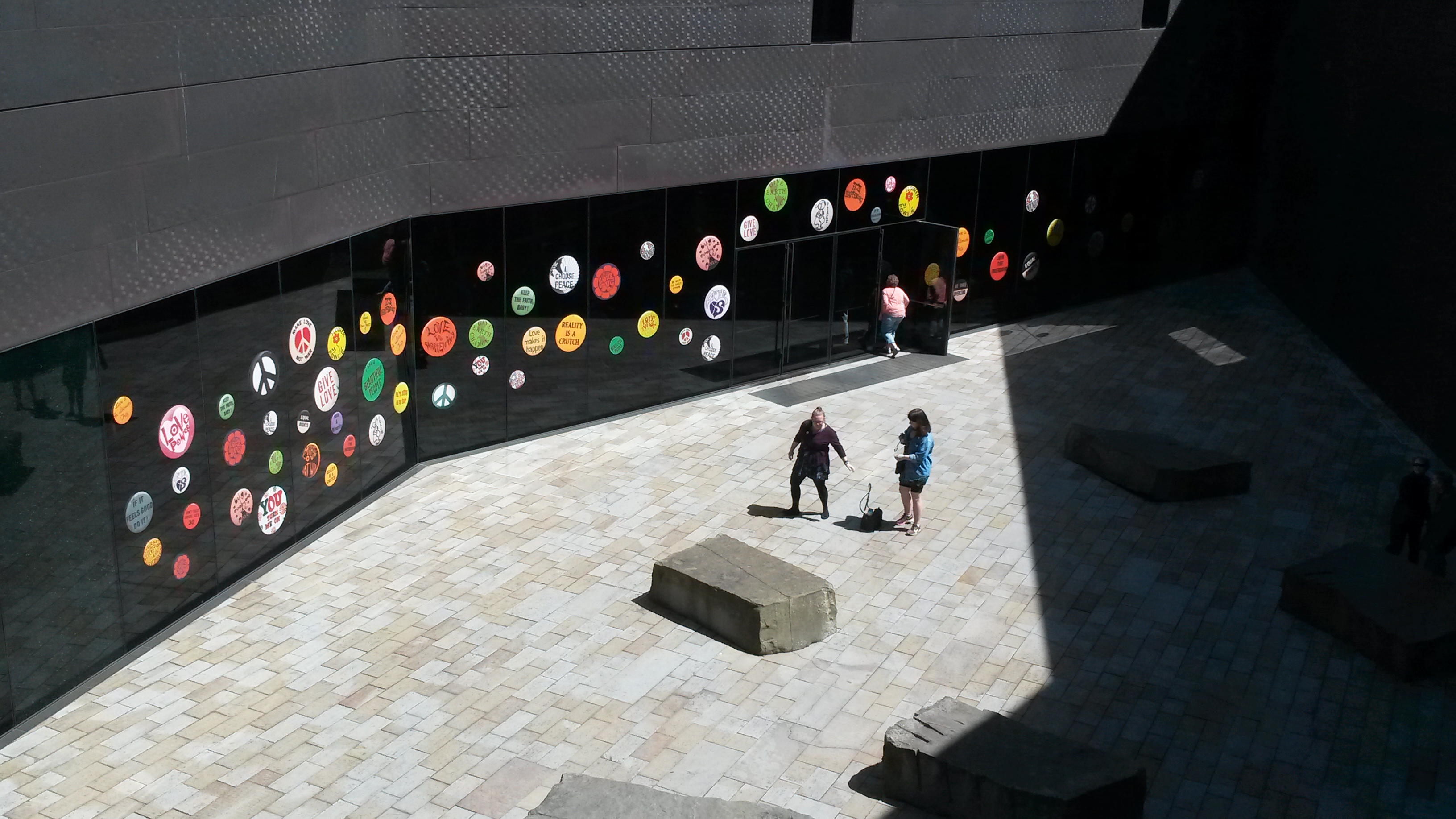
And a very dramatic foyer…
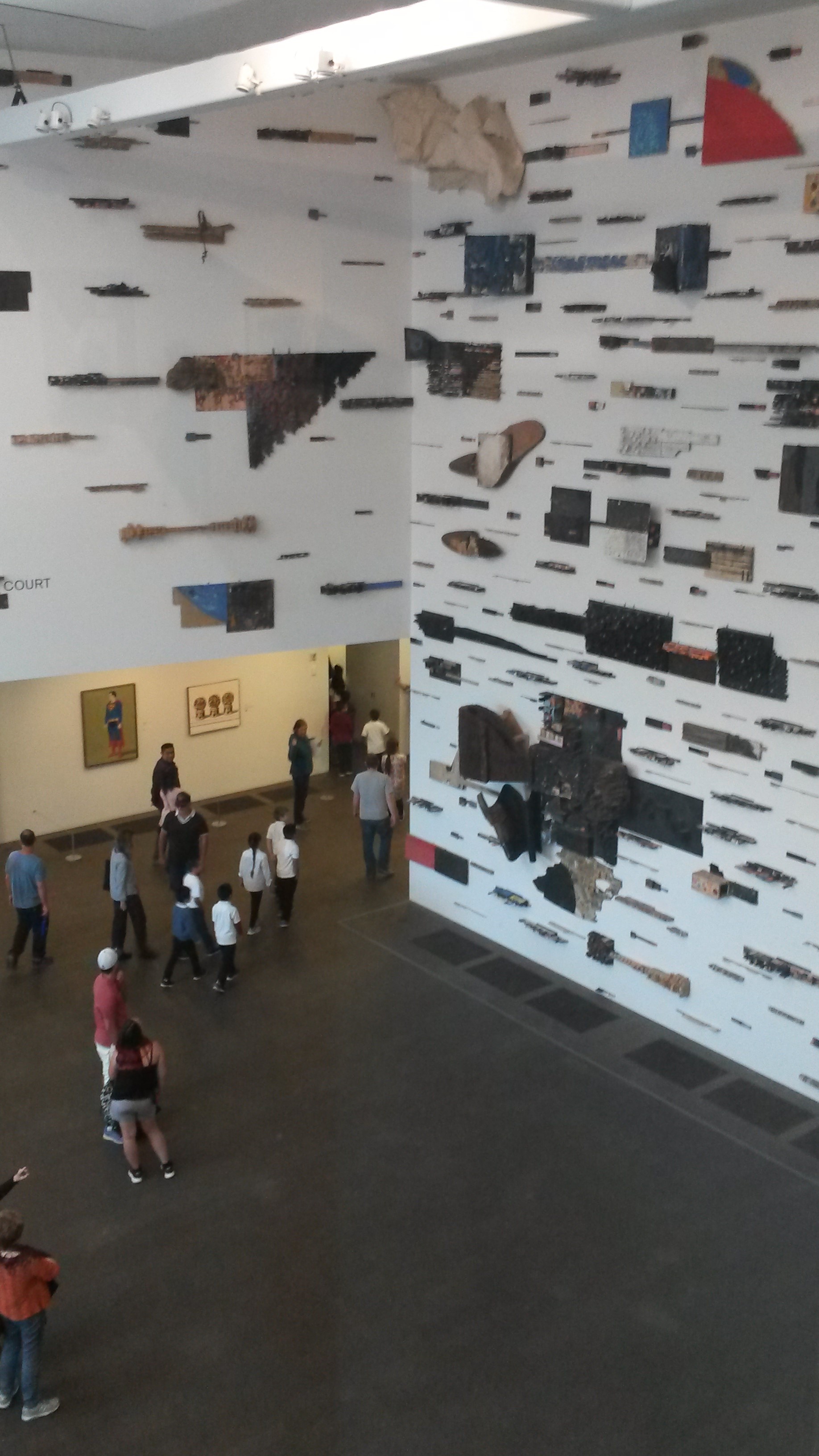
In spite of its imposing shape, it fitted quite well into the park, I thought. The big question is whether this scale of a building (albeit stacked up like hat boxes as they have proposed for Vancouver), and the kind of successful spatial penetrations they have here, can translate from sunny California at 38 degrees north latitude to our greyness at latitude 49.
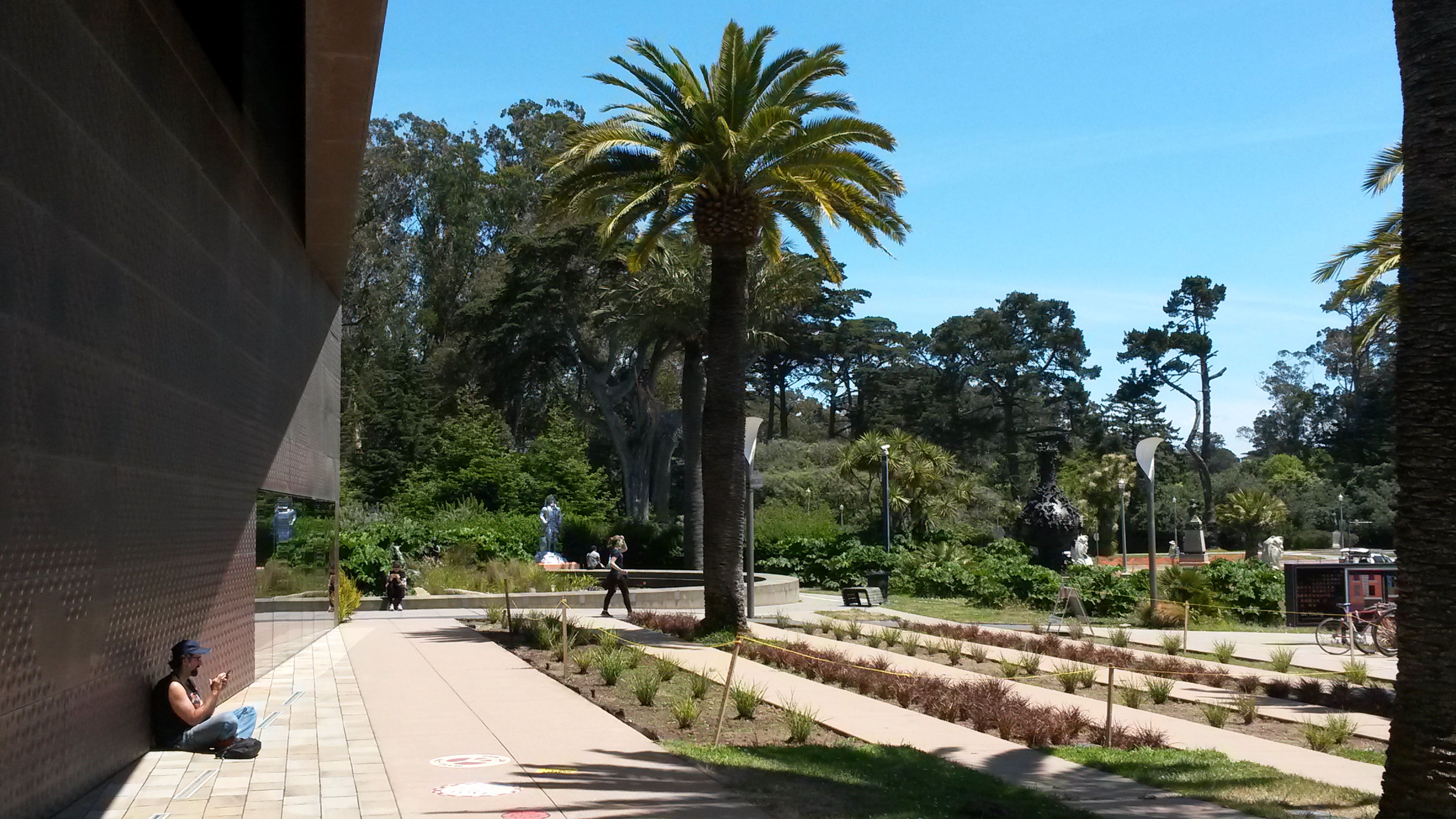
Impressive, though, and an “icon” compared with SF MOMA, which you more or less stumble upon on the downtown city streets.













The de Yong is fine inside. The exterior is modern brutal, rusting pierced metal. There is no relationship to the exterior except a token glass wall, looking out to a mini forest, along the entrance walkway to the lower level.
This is what ‘destination’ buildings are. They stand alone and have absolutely no relationship to the context of the surroundings. They are large sculptural edifices, that sometimes work well. This is what the architect is proposing for Vancouver.
Remember too that the proposed Vancouver design is warm coloured wood. Unless this wood is heavily varnished, regularly, it will go grey and then black with a couple o years.
My concerns as well. I’ve spent a lot of time at the de Young museum — I’m actually a member although I live in Vancouver, and my daughter who works in SF is also a member and like’s its energy, although she doesn’t describe it as male. The spaces in and around the building are fascinating and it has a very comfortable cafeteria and courtyard.
I find Herzog and deMeuron’s Tate Modern in London, on the other hand, brutally unpleasant — just about everything you can imagine doing to isolate modern art from people who might not already be fully engaged. Now, before you imagine that I like my art and buildings pleasant and comfortable, that’s not it. I grew up in a big public art gallery (my father, the director, was once tapped to be the director of the VAG, although he didn’t want to move here) and I like to be challenged by both the art and buildings. But I find the Tate a big and almost grimy assault, even though it is new. The spaces and lighting are huge and dismal, and as one docent told me when I asked her how she liked volunteering there, “it’s a bit like Marmite. Either you love it or hate it, and most people don’t seem to love it.”
That’s the nub of my worry about the new VAG. Although I love the de Young, there’s a kind of foreboding in the Tate that we might not get something that connects well with people. Already in the renderings I don’t see in the ground plane of the new design any great desire to connect with the city at the pedestrian level.
Have just returned from San Francisco – it never fails to impress me. We can learn a great deal from this diverse city.
But upon viewing from a distance their de Young Museum I first thought (being from Vancouver)…oh my, that tower over there has had a building envelope problem and is draped in scaffolding as it undergoes a recladding! But quickly I realized – no, that’s Herzog & deMeuron’s de Young Museum and I thought…oh my, just as they’ve failed to understand anything about Vancouver’s soul and aspirations in their design for the VAG, they’ve similarly done a disservice to San Francisco. While designs for new art galleries should be out-of-the-box (hmm…poor choice of words re: H & deM’s VAG design) and provocative, this doesn’t mean they need to be weirdly perplexing, depressing and, in the case of their VAG effort, uninviting to the pedestrian.
I love the interior of the de Young. The exterior is unnecessarily complex, for no discernible reason. I like to try to understand the “story” of a building. This one is, like too much public art, incomprehensible to me.
I see the cladding as a veil. Everything is screened to reveal only glimpses of the façade and interior functions. Its presence has a hidden meaning, like a curious piece of art where the artist’s rationale remains unpublished and leaves the observer deliberately in the dark (and rather unsatisfied). That may or may not be part of the conceptualization, and in some respects it fails because it may not be literate to the public.
Cor-Ten steel weathers over 50 years to a dark purple patina that protects the steel from rusting through. It could last centuries. In other words, there are better ways to use metal cladding both for creative expression and practicality. The cladding pictured will likely rust all over the building it encloses.
If you look at the first photo above, the cladding obscures some very interesting cantilevered floors. It makes one want to rip the metal skin off the front to expose the really notable stuff. To obscure seems to have become the central architectural rationale. At least, this is the most literal translation.
In some respects, it may be better to provide a simple cube of a building and collaborate with artists to program the detailing of the exterior as well as the interior programming of gallery space and the technical requirements for storage, conservation labs and so forth. The building itself could be put forth as a canvass or other media, including even digital displays. I personally believe that sheet stainless steel and aluminum offer some very powerful material possibilities for 3D indigenous sculpture, and attaching them to purpose-built recesses and alcoves on the outside of a new but simpler design for the VAG museum structure would offer a design that is deeply and appropriately set into local and regional history